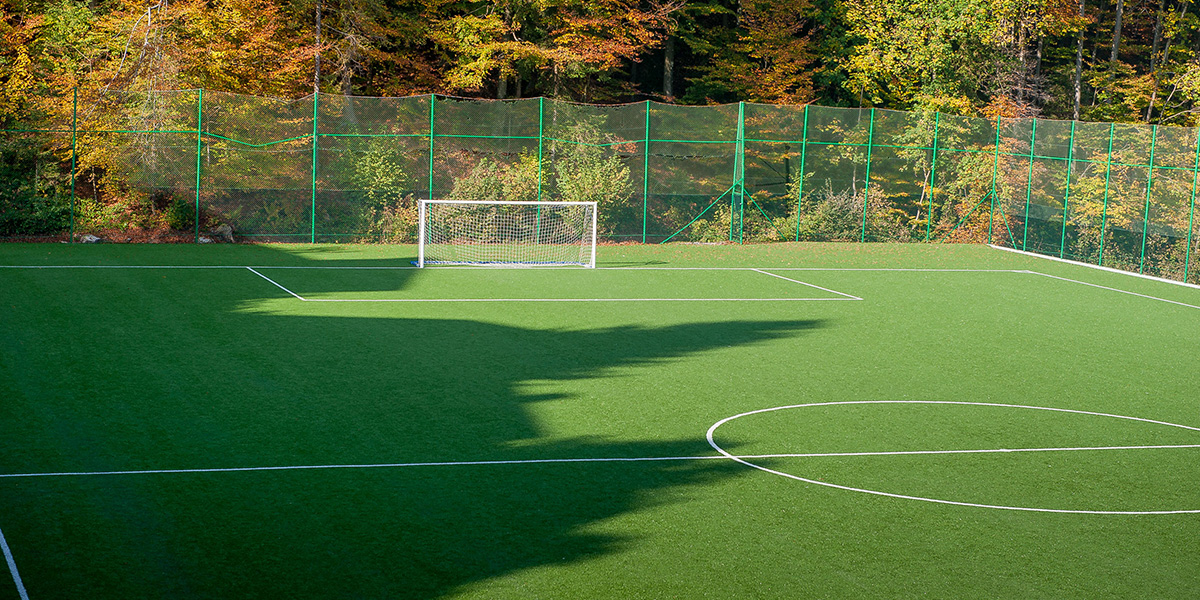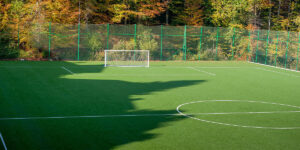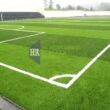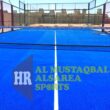

Building a sports field is a significant project that requires careful planning and precise financial management. Whether you’re planning to build a football pitch, basketball court, tennis court, or any other sports facility, budget planning plays a pivotal role in ensuring the project’s success. In this article, we will explore the factors that influence the cost of building a sports field, provide tips for saving costs without compromising quality, and present a case study of fields built with different budgets.
Factors That Influence the Cost of Building a Sports Field
When planning to build a sports field, there are several factors to consider to determine the total cost of the project. Here are the most prominent ones:
1. Type of Sport and Design
- Each sport requires a specific field design. For example, football pitches need large spaces with natural or artificial grass, while tennis courts require hard surfaces or specialized grass. Complex designs increase costs.
2. Type of Flooring
- Sports field flooring varies depending on the sport and budget. Options include:
- Natural Grass: The most expensive due to maintenance requirements.
- Artificial Turf: Less costly in the long run and requires less maintenance.
- Tartan Tracks: Ideal for athletics fields.
- Wooden Flooring: Used for basketball and handball courts.
3. Field Size
- The larger the field, the higher the cost. For example, a football pitch requires more space than a basketball court, leading to higher material and labor costs.
4. Geographical Location
- The cost of land and the availability of materials in the area affect the budget. Building a field in a remote area may require additional transportation costs for materials and equipment.
5. Additional Facilities
- Lighting, seating, drainage systems, and changing rooms all add to the overall cost.
6. Maintenance Costs
- Future maintenance costs should be considered when planning the budget. Some types of flooring require less maintenance than others.
Tips for Saving Costs Without Compromising Quality
Building a sports field doesn’t necessarily mean spending a fortune. There are several ways to save costs while maintaining high quality:
1. Pre-Planning
- Creating a detailed plan before starting the project helps avoid unexpected costs. Conduct a feasibility study that includes all technical and financial aspects.
2. Choosing the Right Materials
- Use durable yet cost-effective materials. For example, artificial turf may be a better option than natural grass if you want to reduce maintenance costs.
3. Leveraging Technology
- Using modern technologies like smart irrigation systems or energy-efficient lighting can reduce operational costs in the long run.
4. Comparing Contractors
- Obtain quotes from multiple contractors and choose the best in terms of quality and price. Ensure the contractor has experience in building sports fields.
5. Phased Construction
- If the budget is limited, you can start by building a basic field and later add additional facilities like lighting and seating.
6. Preventive Maintenance
- Regular maintenance reduces the need for costly repairs in the future. Ensure the flooring and facilities are inspected regularly.
Case Study: Fields Built with Different Budgets
Let’s look at some real-world examples of fields built with different budgets and how the balance between cost and quality was achieved.
1. Small Local Field with a Limited Budget
- Location: A small village.
- Budget: $50,000.
- Details: A football field was built using artificial turf to reduce maintenance costs. Costs were saved by relying on community volunteers to assist in construction. Lighting was simple and solar-powered.
- Outcome: The field became a hub for sports activities in the village at a low cost.
2. Multi-Purpose Field with a Moderate Budget
- Location: A medium-sized city.
- Budget: $200,000.
- Details: A field was built that could be used for both football and basketball. Tartan flooring was used to provide a surface suitable for all sports. Costs were saved by choosing a simple yet functional design.
- Outcome: The field is widely used by local schools and clubs.
3. Professional Field with a High Budget
- Location: A major city.
- Budget: $1,000,000.
- Details: A professional football field was built using natural grass and equipped with the latest lighting and drainage systems. Multi-tiered seating was added to accommodate large audiences.
- Outcome: The field hosts local and international matches, boosting sports tourism in the area.
Conclusion
Building a sports field requires careful planning and an understanding of the factors that influence costs. By choosing the right materials, pre-planning, and leveraging technology, you can save costs without compromising the quality of the field. Case studies of fields built with different budgets show that there are always ways to balance cost and quality.
If you’re looking for a company specialized in building sports fields and installing sports flooring, Future Fast Company offers innovative, high-quality solutions to suit all budgets. Contact us today to learn how we can help you achieve your dream of building an exceptional sports field.







